
|
|
|
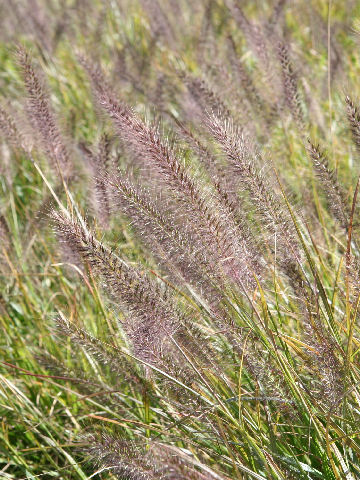 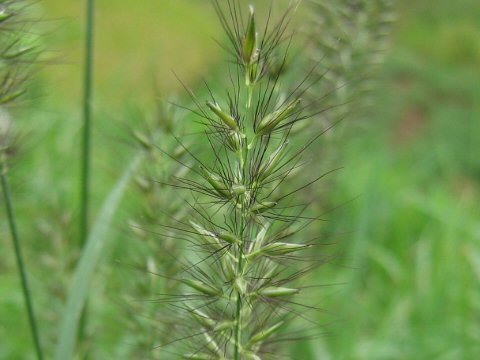 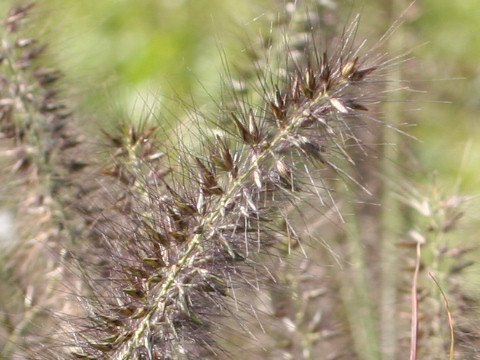 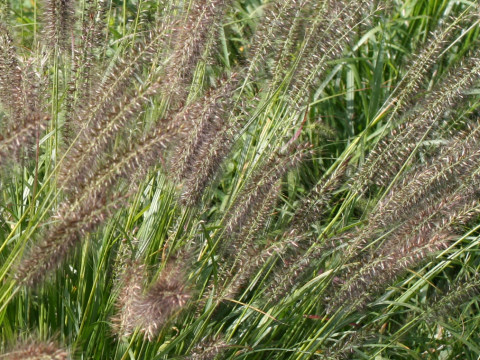 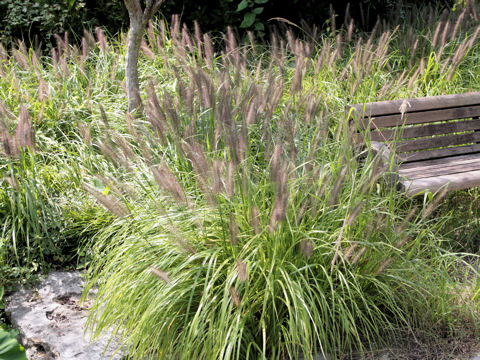 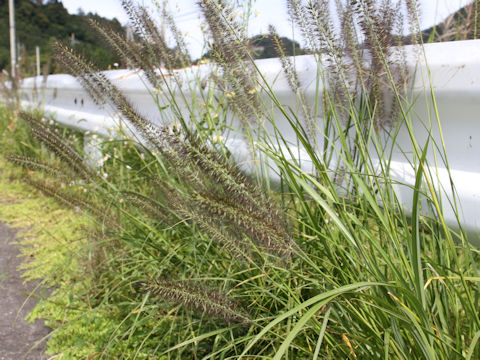 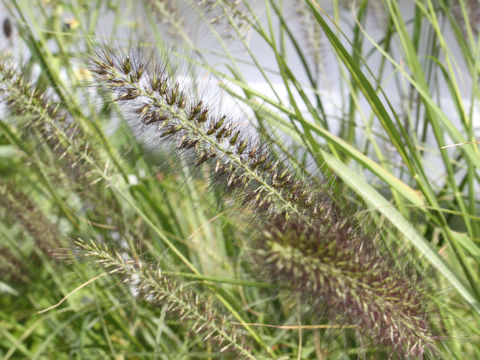 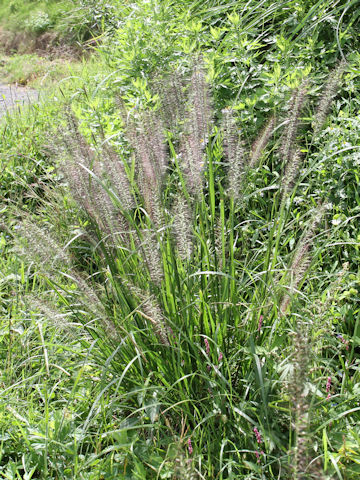 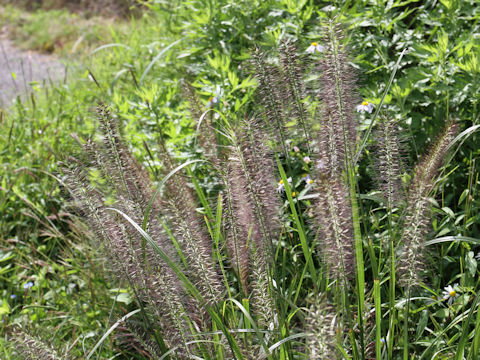 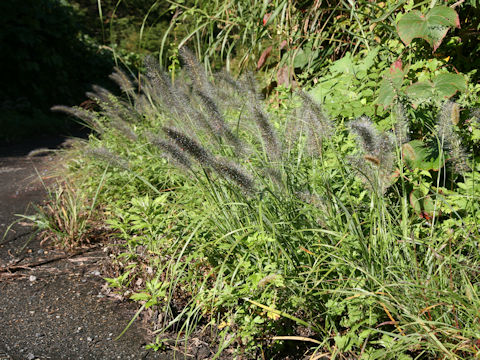 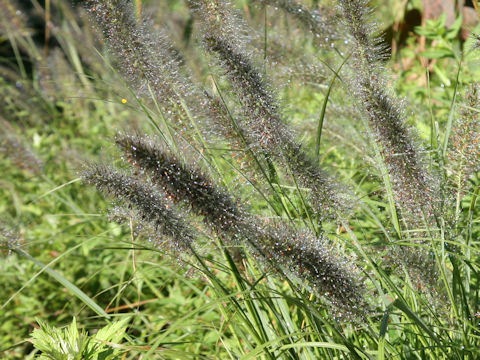 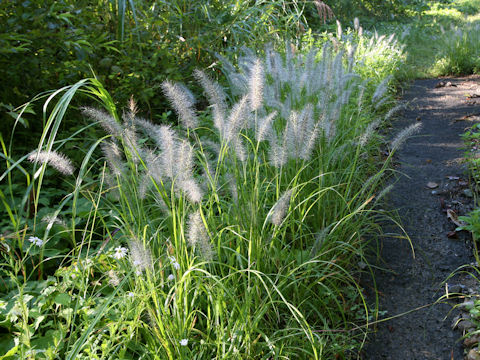 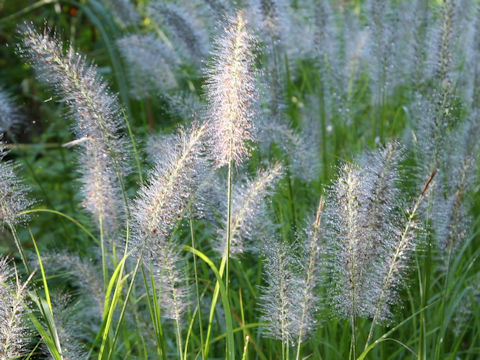 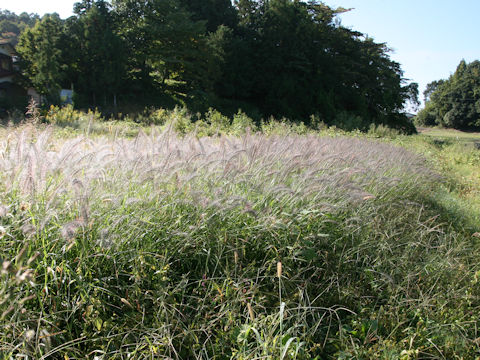 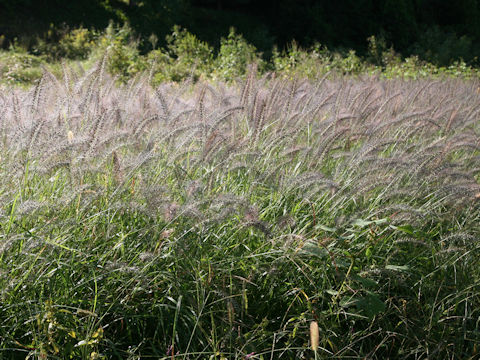 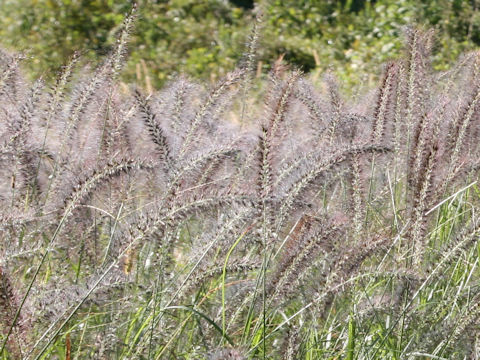 |
|
|
|
わが国の各地をはじめ、東南アジアから東アジアにかけて広く分布しています。草原や荒地に群生します。強い根が張っていて、力を入れてもなかなか抜けないのが和名の由来です。8月から11月にかけて、基部に暗紫色の剛毛のある小穂が多数集まった、10〜20センチの花序をつけます。この剛毛が淡緑色のものは「あおちからしば(青力芝)」と呼ばれます。台湾華語では「狼尾草」、中国語では「狼尾草(lang wei cao)」です。C4植物(C4型光合成を行う植物)です。 |
|
|
イネ科チカラシバ属の多年草で、学名は Pennisetum alopecuroides。英名は Chinese fountain grass。 |
|
|
The Chinese fountain grass (Pennisetum alopecuroides) belongs to Poaceae (the Grass family). It is a perennial herb that is native all over Japan, as well as South East Asia and East Asia. This herb grows in clumps in grasslands or waste grounds. Its Japanese name comes from the fact that it has strong roots that do not easily come loose even if you put a lot of effort into them. The 10-20 cm long spikes are borne from August to November. They consist of many spikelets which have dark purple bristly hairs at the base. The one with light green bristles is called "Ao-chikara-shiba". In Taiwanese Chinese it is "狼尾草" and in Chinese "狼尾草" (lang wei cao). It is a C4 plant (Plants with C4-type photosynthesis). |
|
|
[上] 奈良県御所市櫛羅「葛城山」にて、2006年10月16日撮影。 [中1] 大阪府四條畷市下田原にて、2004年09月28日撮影。 [中2・中3] 長野県辰野町上島にて、2005年09月21日撮影。 [中4] アメリカ・テキサス州「フォートワース植物園」にて、2007年09月16日撮影。(photo by Jon Suehiro) [中5〜中8] 山形県小国町玉川中里にて、2019年09月26日撮影。 [中9〜中12] 山形県小国町小玉川にて、2021年09月19日撮影。 [中13〜14・下] 宮城県大河原町橋本にて、2024年10月12日撮影。 |

|
|
Shu Suehiro |